6 Dumbbell Wrist Exercises for Strength and Stability
Author:
Reviewed by:
(21 years of Oly Lifting experience)
Unlock your full potential by engaging with our experts and community! Have questions about your fitness journey or looking for expert advice on weightlifting techniques? Don’t hesitate — leave a comment below and Sergii Putsov will provide a personalized answer and insights to help you reach your goals.
Torokhtiy is reader-supported. Some links are affiliate links, and we may earn a commission at no extra cost to you. See our disclosure page for details.
Our wrists seem small but their role is big, both in exercises and in daily activities. Lifting weights, typing, carrying bags, you need strong wrists for pretty much everything, and dumbbell wrist exercises are a great way to make them stronger and more resilient.
Why dumbbells, you ask? Well, why not? Can you imagine a gym without at least one pair of dumbbells in it? They’re easy to use, versatile, readily available, and they can be adjusted according to anyone’s fitness level.
Plus, when you add dumbbells to your regular wrist exercises, you get an extra layer of challenge that helps you build strength and endurance better.
So grab a pair and let’s get started!
What are dumbbell wrist exercises? They’re movements that target the muscles in the wrists and forearms. They include wrist curls, wrist rotations, hammer curls, etc. They strengthen your wrists, improve stability, flexibility, and performance, so they’re beneficial for a lot of different activities and sports.
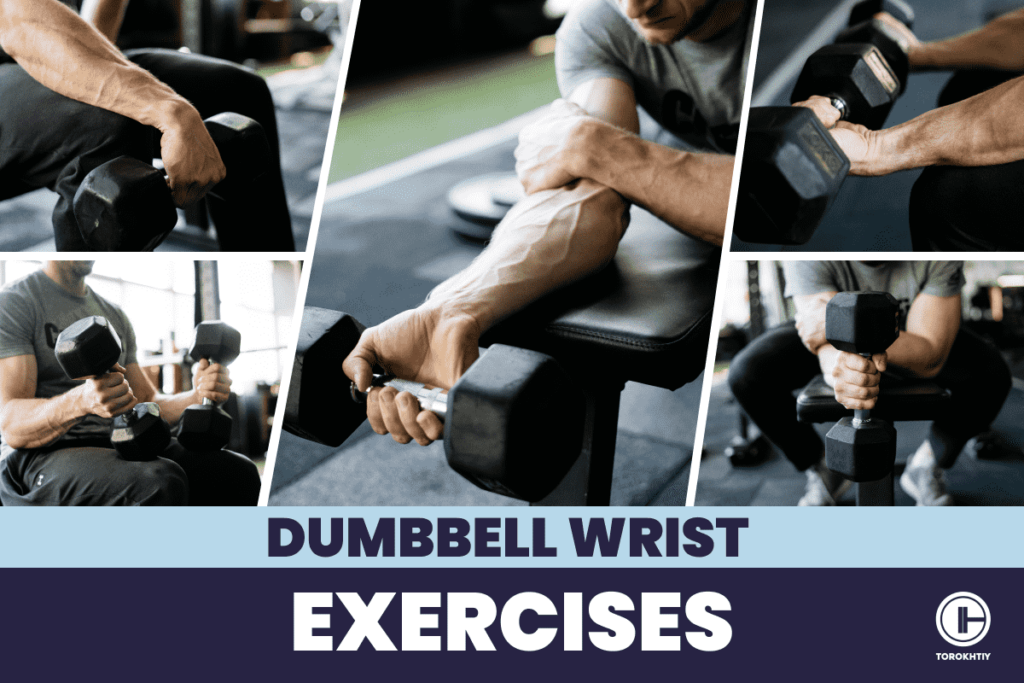
Importance of Strong Wrists
Think of strengthening your wrists as a long-term investment in your health and functionality that will make it possible for you to keep an active lifestyle and do your daily tasks efficiently.
Jake Depp, a physical therapist from Ohio State Wexner Medical Center pointed out that strong wrists and hands can be an indicator of good health, while a research published in the American Journal of Preventive Medicine noted that grip strength can be a marker of hypertension and diabetes.
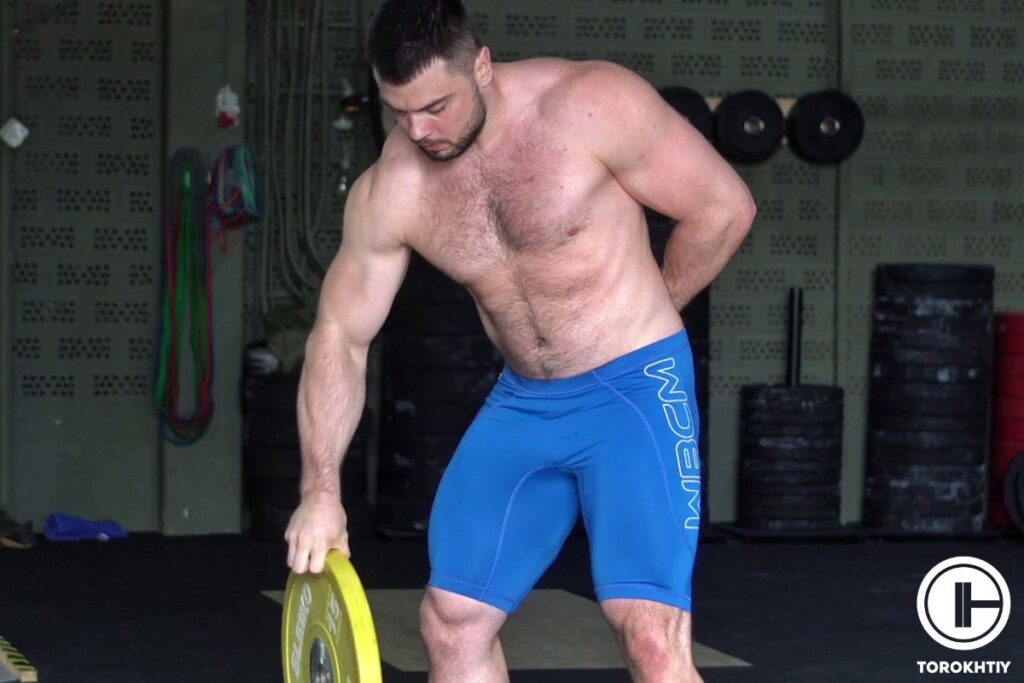
Your wrists are always working, so if they’re weak, you might feel discomfort and the weakness can prevent you from doing the things you need to do. If they’re strong, however, they will make your life easier and prevent injuries.
This is especially important for people that do repetitive high-impact activities (athletes, musicians, manual laborers) because strengthening the muscles and ligaments around the wrist joint can reduce the risk of sprains and strains.
In addition to this, strong wrists contribute to your body mechanics and alignment. They distribute the forces evenly throughout the body, which can make whatever you’re doing easier on the other joints, like elbows and shoulders.
Follow us!

Free!
Get a 2-week Weightlifting Program as a bonus for the subscription to kickstart your training plan!

Free!
Top 6 Dumbbell Wrist and Forearm Exercises
If you’re looking for a way to improve the strength of your wrists, then you want to pay close attention to this section. But these wrist workouts with weights will be good even for people who are recovering from injuries or want to make their wrists healthier.
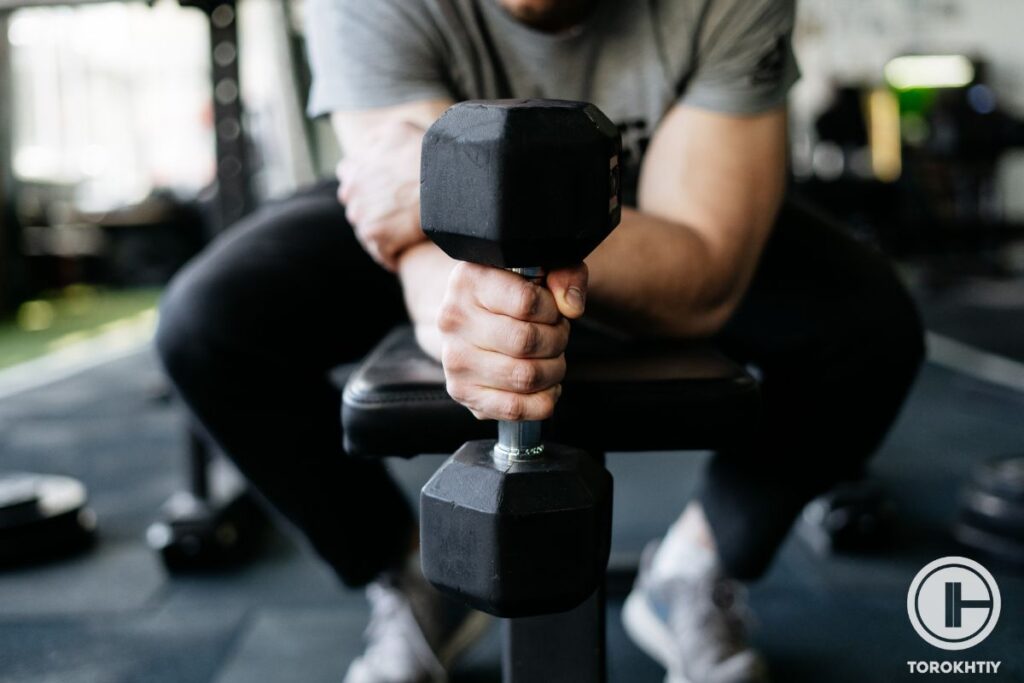
The best thing about them is that each can be adapted to how much intensity you can handle, so choose your dumbbells according to what your current fitness level allows.
1. Wrist Curls
To do wrist curls, sit on a bench or chair with your forearm resting on your thigh, palm facing up, and holding a dumbbell. Extend your wrist, then curl the weight up by flexing the wrist. Then slowly lower the weight back down. Do 2-3 sets of 10-15 reps, 2-3 times per week.
Wrist curls target your wrist flexor muscles and strengthen the front of your forearm. They also do a great job at improving wrist stability. Apart from strengthening your wrists, this wrist dumbbell workout will also improve the strength of your grip and any activities that involve wrist flexion (like lifting things, throwing, swinging) will be easier to do.
Make sure to start with lighter weights and increase the resistance bit by bit. Try to work through a full range of motion but if you feel discomfort, reduce the weight (if it feels sketchy – it’s sketchy).
2. Reverse Wrist Curls
You start this one almost the same as you would regular wrist curls – sit on a chair or bench, rest your forearm on your thigh, but your palm should be facing down and holding a dumbbell. Flex your wrist, then curl the weight up by extending the wrist and lower it back down. 2-3 sets of 10-15 reps 2-3 times per week is the ideal frequency.
These wrist exercises with dumbbells target your wrist extensor muscles, make the back of your forearm stronger and improve wrist stability in the opposite direction of wrist curls. Reverse wrist curls will help balance out wrist strength, prevent imbalances and reduce the risk of overuse injuries.
Tips From the Champ
Incorporate time under tension (TUT) techniques to make these exercises even more effective. Instead of focusing only on reps and sets, manipulate the tempo of each rep to activate the muscles more and stimulate hypertrophy. For example, slow down during the lowering phase of the movement – aim for 3-4 seconds of the lowering phase before you explosively contract the muscles during the lifting phase.
Olympic Weightlifting Champion
3. Wrist Rotations
For wrist rotations, you need to either stand or sit with a dumbbell in hand, and your arm needs to be extended forward, parallel to the floor. Rotate your wrists slowly in a circular motion, clockwise and then counterclockwise. Do 2-3 sets of 10-15 reps in each direction, 2 to 3 times a week.
Wrist rotations promote flexibility and range of motion and target the muscles responsible for wrist mobility and rotational movements. This is a great exercise in general, but it’s especially good for activities that include twisting or turning motions (racket sports or manual labor).
4. Bicep Hammer Curls
This is an exercise you’ll do standing up. Keep your feet shoulder-width apart and hold a dumbbell in each hand with a neutral grip (meaning, palms facing in). Your elbows should be close to your sides.
Slowly curl the weights up toward your shoulders and then lower them back down with control. 2-3 sets of 10-12 repetitions 2-3 times a week is more than enough for these.
Your biceps will get the most attention, but hammer curls will engage your forearms as well. When you strengthen these muscles, your grip gets stronger and your forearms become more stable.
5. Dumbbell Finger Curls
These target the flexor muscles of the fingers and forearms and they can do a lot for grip strength.
Stand or sit down, hold a dumbbell on a side in each hand. Close your hands to curl the dumbbells towards your forearms by flexing your fingers. Once you’ve curled the dumbbells as far as you can, slowly extend your fingers to lower the dumbbells back to the starting position.
As far as the frequency goes, you can do this exercise as much as you do any other wrist strengthening exercises.
6. Farmer’s Walk
You can use either a dumbbell or kettlebell for this one, but we’ll focus on the dumbbells. Hold one in each hand, stand up and extend your arm fully at your sides. Walk forward with an upright posture and keep the dumbbells close to your body. Do 2-3 sets, the good benchmark is to go as long/far as you can, holding in each arm 0.5 of your bodyweight.
This is an exercise that will benefit your entire upper body. It will engage the muscles in your wrists, forearms, hands, and improve the strength of your grip. It will also improve your posture and core stability, so it’s an excellent addition to any training routine.
| Exercise | Explanation | Benefits |
|---|---|---|
| Wrist Curls | Sit with forearm resting on the thigh, palm up, holding a dumbbell. Flex the wrist to curl the weight up, then lower it down. | Targets wrist flexor muscles, improves grip strength and wrist stability. |
| Reverse Wrist Curls | Sit with forearm on your thigh, palm facing down, holding a dumbbell. Extend the wrist to curl the weight up, then lower back down. | Targets wrist extensor muscles, balances wrist strength, reduces the risk of injuries resulting from overuse. |
| Wrist Rotations | Stand or sit, hold a dumbbell in your hand and extend your arm forward. Rotate the wrist clockwise, then counterclockwise. | Promotes wrist mobility, improves rotational movements. |
| Bicep Hammer Curls | Stand with your feet shoulder-width apart and hold the dumbbells with palms facing in. Curl the weights toward shoulders, then lower. | Engages biceps and forearms, strengthens grip, improves the stability of forearms. |
| Dumbbell Finger Curls | Sit down, hold a dumbbell in each hand. Curl the dumbbells towards forearms by flexing fingers, then slowly extend the fingers to lower the weights. | Strengthens finger and forearm flexors, improves grip strength and endurance, helps prevent injuries |
| Farmer’s Walk | Hold dumbbells at your sides and walk forward while keeping your posture upright. | Engages wrists, forearms, and hands, improves grip strength, posture, and core stability. |
How to Grow Big and Strong Forearms: 3 Ways
Big, strong forearms are great to see, which is probably why most people want them. But it’s not just about the looks because having strong forearms impacts functionality and strength.
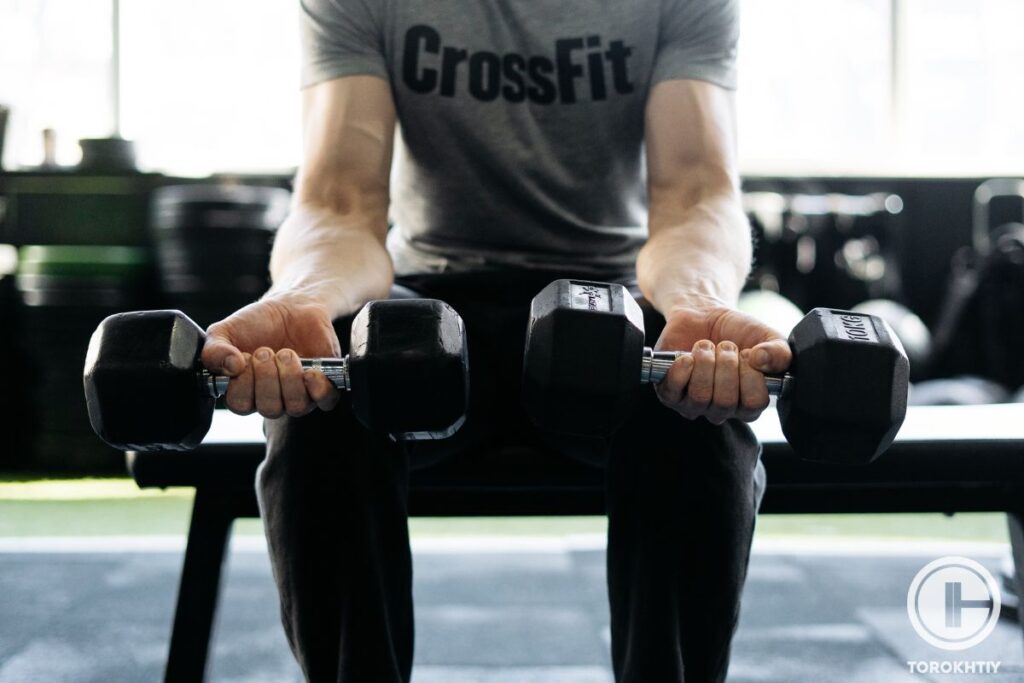
Here’s how you can make your forearms bigger and improve your performance and the health of your wrists.
1. Progressive Overload
If you know anything about working out, there’s no way you haven’t heard of this principle. Progressive overload is the key to progress and avoiding plateaus. Basically, you increase the demands placed on your muscles over time, and that stimulates growth and adaptation.
When it comes to forearms specifically, this means that you will increase the weight, repetitions, and difficulty as your strength improves. You need to start with lighter weights and then gradually increase the resistance to keep your muscles challenged.
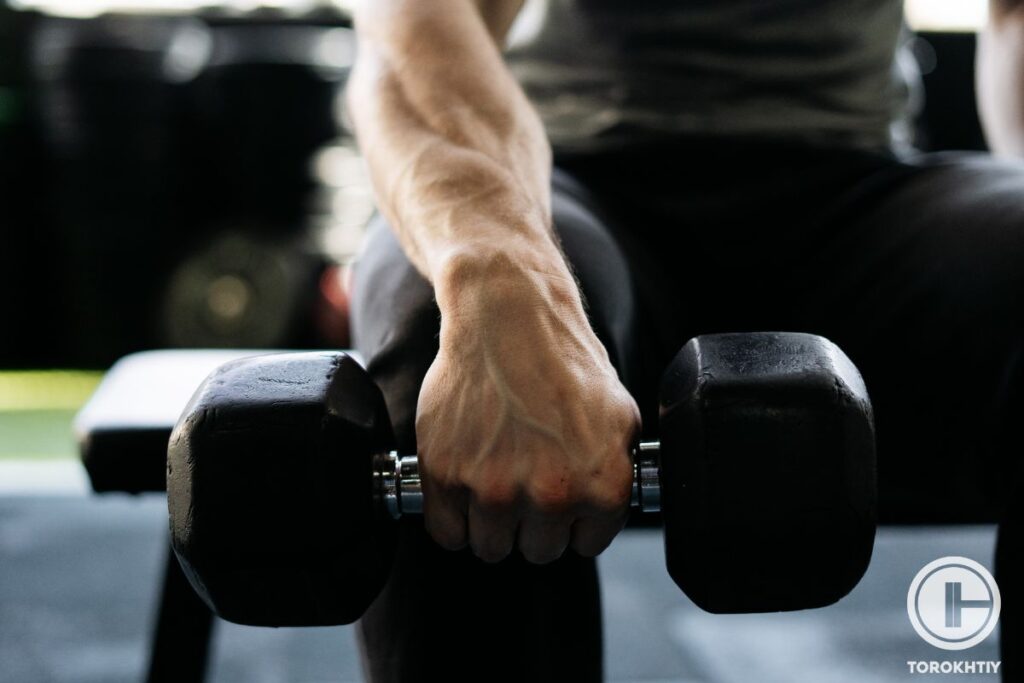
2. Volume, Intensity, and Recovery
It’s all about balance. Volume (the total amount of work performed), intensity (the level of effort or resistance), and recovery need to be in balance if you want to get the most out of your workouts.
The rule of thumb is to keep things challenging, but manageable, so you feel some discomfort, but nothing extreme. Mix high and low reps to check what works for you better
Recovery is just as important as the workouts and you absolutely must incorporate rest days into your routine to allow your muscles some time to repair and grow.
Tips From the Champ
Include eccentric contractions into your exercises to amp them up. During the lowering phase of each rep, resist the weight slowly and under control, and emphasize the stretch of your forearms. The eccentric loading stimulates muscle fibers differently and leads to greater gains in size.
Olympic Weightlifting Champion
3. Adding Wrist Exercises into an Existing Routine
Changing an established workout routine might not seem like something you want to do, but it’s crucial for progress, and wrist exercises are not hard to include. Besides, think about how great your arms will look and the whole thing becomes instantly easier.
Start with 2-3 sessions per week (you can start with 12 sets in total in a week and see how it goes) and then increase the intensity and/or volume as needed. Just make sure to do everything with proper form and technique, so your exercises are effective and you don’t get hurt.
Conclusion
Wrist workouts with dumbbells are the way to stronger, healthier wrists, and an easier way to do your everyday tasks. Remember that your superpower is adaptability, so tweak every exercise to match your fitness level and the results you’re after.
Consistent effort and a sprinkle of creativity is the difference between weak wrists and nice, strong ones, and your forearms will follow. Consistency is key, so make these exercises a regular part of your routine and you’ll see positive changes before you know it.
Which of these exercises is your favorite and why? Do you have any modifications you made for any of these? Got any flexing tunes to pump up the workout vibe?
If you’re willing to share your secrets with us, we couldn’t be happier and we can’t wait to see what they are and try them out! But if you prefer to keep them to yourself, that’s fine, too – drop an opinion, question, or advice to keep the conversation going!
Also read:
- How To Get Bigger Wrists: Growth Strategies & Exercises
- Master Grip and Wrist Strength with Kettlebell Wrist Workout
- Low Bar Squat Wrist Pain: Reasons & Solutions
- Front Squat Grip Secrets – Techniques & Tips
- 5 Essential Grip Strength Benefits for Health & Performance
References:
- Arch G. Mainous III, Rebecca J. Tanner, Stephen D. Anton, Ara Jo “Grip Strength as a Marker of Hypertension and Diabetes in Healthy Weight Adults,” American Journal of Preventive Medicine (July 29, 2015).
- Becks Shepherd “Why are rest days important?” LiveScience, https://www.livescience.com/why-are-rest-days-important (accessed April 5th, 2024)
- Brad J. Schoenfeld, Jozo Grgic, Dan Ogborn, James W. Krieger “Strength and Hypertrophy Adaptations Between Low- vs. High-Load Resistance Training: A Systematic Review and Meta-analysis,” Journal of Strength and Conditioning Research 31, no. 12 (2017): 3508-3523.
- Gerrit Stassen, Lukas Baulig, Ole Müller, Andrea Schaller “Attention to Progression Principles and Variables of Exercise Prescription in Workplace-Related Resistance Training Interventions: A Systematic Review of Controlled Trials,” Frontiers in Public Health, March 25, 2022, Sec. Occupational Health and Safety, Volume 10 – 2022.5. Jake Depp, PT “Why a strong grip is important, and how to strengthen those muscles,” Ohio State Health & Discovery, https://health.osu.edu/wellness/exercise-and-nutrition/why-a-strong-grip-is-important (accessed April 5th, 2024).
- Photos made by Torokhtiy Media Team.
Why Trust Us?
With over 20 years in Olympic weightlifting, strength training, nutrition coaching, and general fitness our team does its best to provide the audience with ultimate support and meet the needs and requirements of advanced athletes and professional lifters, as well as people who strive to open new opportunities and develop their physical capabilities with us.
By trusting the recommendations of our certified experts in coaching, nutrition, and sports training programming, as well as scientific consultants, and physiotherapists, we provide you with thorough, well-considered, and scientifically proven content. All the information given in the articles concerning workout programming, separate exercises, and athletic performance, in general, is based on verified data.
The product testing process is described in more detail here.
Author: Sergii Putsov
Head of Sport Science, PhD
Best Results: Snatch – 165 kg,
C&J – 200 kg
Sergii Putsov, Ph.D., is a former professional weightlifter and National team member, achieving multiple medals in the 94 kg weight category at national competitions. With a Master’s degree in “Olympic & Professional Sport Training” and a Sport Science Ph.D. from the International Olympic Academy, Greece, Sergii now leads as the Head of Sport Science. He specializes in designing training programs, writing insightful blog articles, providing live commentary at international weightlifting events, and conducting educational seminars worldwide alongside Olympic weightlifting expert Oleksiy Torokhtiy.
Reviewed by: Oleksiy Torokhtiy
Olympic Weightlifting Champion, PhD in Sport Science
Best Results: Snatch – 200 kg,
C&J – 240 kg
Oleksiy Torokhtiy is a professional athlete boasting 20 years of experience in Olympic weightlifting. With multiple European and World titles under his belt, he has showcased his prowess in two Olympic Games (Beijing 2008 and London 2012). Upon concluding his illustrious career, Oleksiy dedicated himself to coaching. By 2022, he had conducted over 200 weightlifting seminars worldwide. He is the visionary behind an international sportswear and accessories brand known for its motto, “Warm Body Cold Mind.” Additionally, he is an esteemed author and the creator of a series of training programs and eBooks.





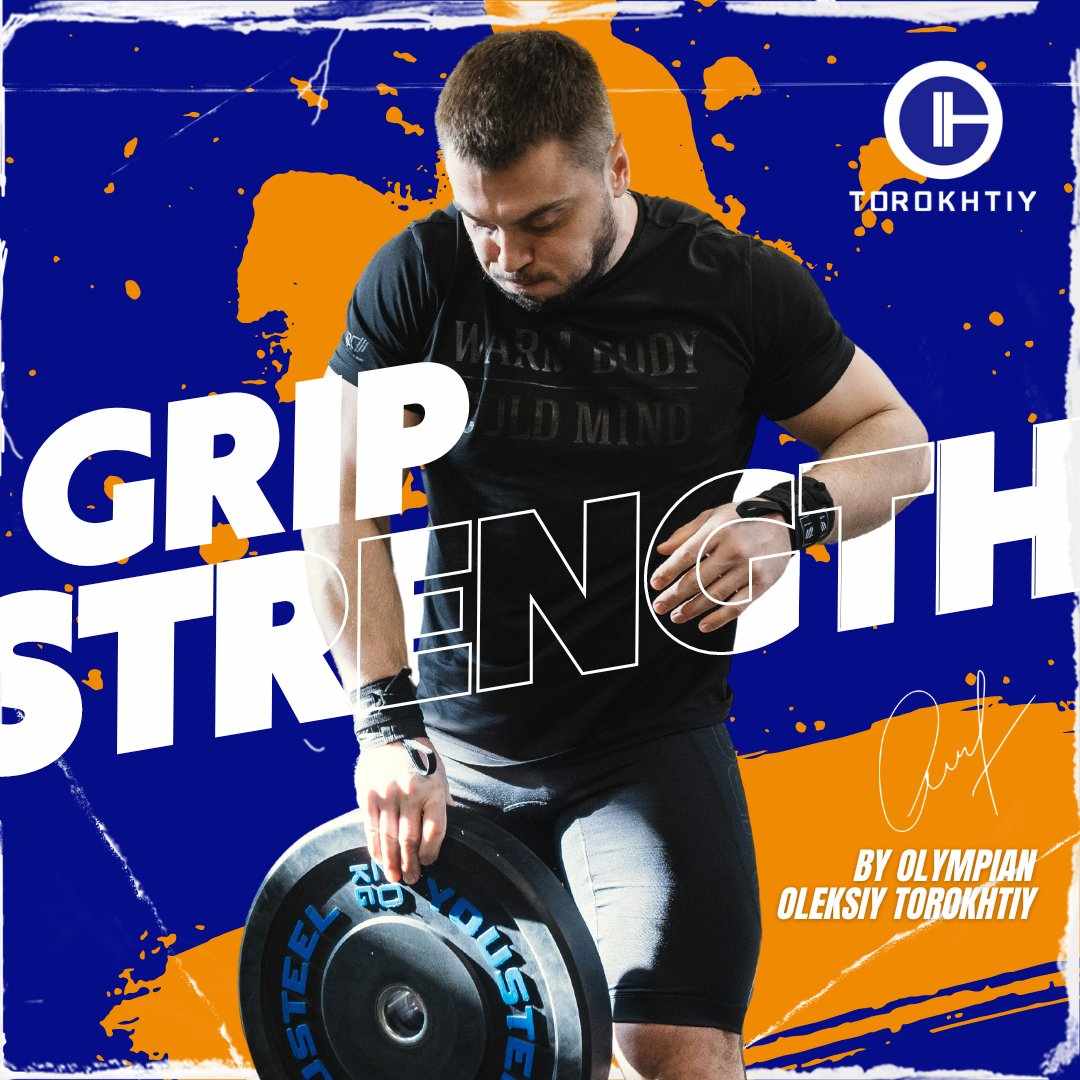
Still have questions after reading our article? Unlock your full potential by engaging with our experts and community! Don’t hesitate — leave a comment below and Sergii Putsov will provide a personalized answer and insights to help you reach your goals.